ABB 7B412B Handleiding
ABB
Slijpmachine
7B412B
Bekijk gratis de handleiding van ABB 7B412B (4 pagina’s), behorend tot de categorie Slijpmachine. Deze gids werd als nuttig beoordeeld door 61 mensen en kreeg gemiddeld 4.9 sterren uit 31 reviews. Heb je een vraag over ABB 7B412B of wil je andere gebruikers van dit product iets vragen? Stel een vraag
Pagina 1/4

MN906
No. 280F Replaces 280E
LB7011
Instruction Manual For Baldor Buffers
1MN906
SAFETY NOTICE:
WARNING statements describe conditions that may lead to personnel injury including potentially fatal injuries if the
machine is not properly used and warnings are not properly followed.
Caution statements describe conditions that may lead to equipment damage.
WARNING: Do not operate this buffer until you are sure that you are completely familiar with the safe operation of the
buffer, all accessories and safety equipment. Improper use can lead to severe injury. This manual defines
proper use of this equipment. Before using this equipment for any other use, please consult Baldor. Contact
Baldor if you do not understand any procedure or operation concerning this buffer or this manual.
WARNING: Prevent electrical shock hazard and accidental machine operation. Always disconnect buffer from the power
source before servicing, changing accessories or before performing maintenance. Electrical shock can
cause serious or fatal injury. Only qualified personnel should install, maintain or troubleshoot this equipment.
WARNING: Avoid accidental starting. Make sure switch is in “OFF” position before connecting to power source.
WARNING: Be sure the system is properly grounded before applying power. Do not apply power before you ensure that
grounds are connected. Electrical shock can cause serious or fatal injury. Follow the National Electrical Code
(NEC) and local codes for the safe installation of this equipment.
WARNING: Always use safety glasses with side shields (or full face shield) when operating buffer. Do not use ordinary
eyeglasses. Also use face or dust mask if buffing operation is dusty. WARNING: Unsuitable accessories or
attachments added to this machine can create hazards. Baldor accessories are specifically designed to be
used with this buffer. Use accessories or attachments only in the proper intended manner. Accessories or
attachments obtained from another source may cause hazards. Consult the manufacturer before use.
WARNING: Remove adjusting keys and wrenches from this product after use. Check to see that keys and adjusting
wrenches are removed from buffer before turning it on. Projectiles can cause severe injury to yourself or
others.
WARNING: Keep work area clean and well lighted. Clutter and poor lighting invites accidents.
WARNING: Do not use in dangerous environment. Do not use buffers in damp or wet locations, or expose them to rain.
Electrical shock can cause serious or fatal injury. Follow the National Electrical Code (NEC) and local codes
for the safe installation of this equipment.
WARNING: Do not wear loose clothing, neckties, rings, bracelets, or other jewelry to get caught in moving parts. Nonslip
footwear is recommended. Wear protective hair covering to contain long hair.
WARNING: Do not reach over buffer during operation. Keep proper footing and balance at all times. A rotating wheel
can catch an article of clothing and cause personnel injury. Always keep hands at least 2 inches from wheels.
WARNING: Check damaged parts. Before further use of the buffer, carefully check to assure that it will operate properly
and perform its intended function. Check for alignment of moving parts, binding of moving parts, breakage of
parts, mounting, and any other conditions that may affect its operation.
WARNING: When starting a buffer for the first time, or after installing a replacement buffing wheel, it is most important
that the operator stand aside for at least one minute of rotation at full speed. This is the correct practice
since debris in the wheel may be thrown out during the first moments the machine is in operation.
WARNING: Use proper extension cord. Make sure your extension cord is in good condition. When using an extension
cord, be sure it is rated for the voltage and current rating of your product. An undersized cord will cause a
drop in line voltage resulting in loss of power and overheating. Table 1 shows the correct wire size to use
depending on cord length and nameplate ampere rating. If in doubt, use the next heavier gauge. The smaller
the AWG gauge number, the heavier the cord.
WARNING: Dust created during buffing, sawing, power sanding, drilling, and other activities may contain chemicals
known to the State of California to cause cancer, birth defects or other reproductive harm.
WARNING: Keep children and visitors away. Padlock equipment or work area when not in use.
WARNING: Never leave buffer running unattended. Always turn power off after use.
Caution: Do not force buffer. It will do the job better and safer at the feed rate for which it was designed.
Caution: Maintain buffer with care. Keep buffer clean for best and safest performance.
Tool rests are not recommended to be used with a buffer. There is the possibility of the work piece becoming caught
in the cloth wheel and pulling the operator’s hand into the machine or hurling the work piece away from the machine
in a hazardous manner, or both.
Use soft cloth wheels marked for safe operations at or over the maximum RPM rating on this buffer. Using a wheel
rated at a lower RPM than the machine is rated can cause a hazardous condition and result in short wheel life.
Use soft cloth wheels only on buffer. Buffer is not designed to be used with hard wheels or wire wheels.
This buffer is supplied without guards or a dust hood. Depending on the location and installation of the buffer, the
type of cloth wheel and compound used for an application, the piece to be polished, and other factors, the end user
of this buffer may determine that use of a guard or dust hood around the cloth wheel is appropriate. Baldor Electric
Company does not include a guard with this buffer. The end user is responsible to determine if any type of guard
or dust hood is appropriate for the end user’s use of the buffer. The end user may contact Baldor Electric Company
with any questions.
If machine should be damaged, discontinue using the buffer until the repairs are made.

2MN906
Figure 1 Typical Buffer
Installation When you receive your unit, there are several things you should do immediately.
1. Observe the condition of the shipping container and report any damage immediately to the commercial carrier
that delivered the product.
2. Verify that the part number you received is the same as the part number listed on your purchase order.
WARNING: When starting a buffer for the first time, or after installing a replacement buffing wheel, it is most important
that the operator stand aside for at least one minute of rotation at full speed. This is the correct practice
since debris in the wheel may be thrown out during the first moments the machine is in operation.
3. Mount buffer on solid bench. The buffer must be securely bolted to a rigid mounting surface. If a pedestal is
used, rst bolt pedestal securely to oor and then bolt buffer to pedestal.
4. Check buffer nameplate to make certain the rating is correct for the power source,voltage and frequency. See
electrical and grounding instructions for electrical service connection.
5. Install soft cloth bufng wheel (see Figure 1).
a. Remove arbor nut, spacer and outer wheel ange.
b. Place the buffer wheel on the arbor.
c. Install the outer wheel ange, spacer and arbor nut.
d. The arbor nut should be tightened just enough to prevent wheel slippage on the arbor and the
vinyl arbor nut cover must be in place.
When starting buffer for the rst time or after installing replacement wheel, it is most important that the operator
stand aside for at least one minute. Debris in the wheel may be thrown out during the rst moments the machine is
in operation.
Electrical Instructions
Single phase buffers are equipped with cord and grounding type plug for 115 volts. To use with a different voltage,
see instructions provided to make wiring changes. All attachment plugs and any receptacles must be replaced with
devices rated for the voltage for which the buffer is reconnected. Table 1 indicates the minimum wire size. Be sure to
comply with NEC and local wiring codes.
Grounding Instructions
WARNING: Be sure the system is properly grounded before applying power. Do not apply power before you ensure that
grounds are connected. Electrical shock can cause serious or fatal injury. Follow the National Electrical Code
(NEC) and local codes for the safe installation of this equipment.
1. All grounded, cord-connected buffers:
In the event of a malfunction or breakdown, grounding provides a path of least resistance for electric current to
reduce the risk of electric shock. This buffer is equipped with an electric cord having an equipment-grounding
conductor and a grounding plug.
The plug must be plugged into a matching outlet that is properly installed and grounded in accordance with all
local codes and ordinances. Do not modify the plug provided. If it will not t the outlet, have the proper outlet
installed by a qualied electrician.
Improper connection of the equipment-grounding conductor can result in a risk of electric shock. The “Green”
insulated wire (with or without yellow stripes) is the equipment-grounding conductor. If repair or replacement of
the electric cord is necessary, do not connect the equipment-grounding conductor to a live terminal. Check with
a qualied electrician or serviceman if the grounding instructions are not completely understood, or if in doubt
as to whether the tool is properly grounded.
Use only 3-wire extension cords that have 3-prong grounding plugs and 3-pole receptacles that accept the
tool’s plug. Repair or replace damaged or worn cord immediately.
2. Grounded, cord-connected buffers intended for use on a supply circuit having a nominal rating less than 150
volts. This buffer is intended for use on a circuit that has an outlet that looks like the one illustrated in
Figure A or B.
Grounding
Blade
Grounding
Blade
Cover of
Grounded
Outlet Box

3MN906
3. Permanently connected buffers:
This buffer should be connected to a grounded, metal, permanent wiring system; or to a system having an
equipment-grounding conductor.
Operation
WARNING: Do not operate this buffer until you are sure that you are completely familiar with the safe operation of the
buffer, all accessories and safety equipment. Improper use can lead to severe injury. This manual defines
proper use of this equipment. Before using this equipment for any other use, please consult Baldor. Contact
Baldor if you do not understand any procedure or operation concerning this buffer or this manual.
WARNING: When starting a buffer for the first time, or after installing a replacement buffing wheel, it is most important
that the operator stand aside for at least one minute of rotation at full speed. This is the correct practice
since debris in the wheel may be thrown out during the first moments the machine is in operation.
Always use safety glasses with side shields (or full face shield) when operating buffer. Also use face or dust mask if
cutting operation is dusty. Everyday eyeglasses only have impact resistant lenses, they are NOT safety glasses.
Check that the On-Off switch is in the “OFF” position, and the shaft moves freely. When starting buffer for the rst
time or after installing replacement wheel, it is most important that the operator stand aside for at least one minute.
Debris in the wheel may be thrown out during the rst moments the machine is in operation. After connecting buffer
to power source, turn switch on. Buffer should come up to speed smoothly and without vibration. If buffer does not,
shut buffer off immediately and determine reason.
Always keep hands at least 2 inches from wheels. If the work piece is small, use a holder to keep hands 2 inches or
more from wheels.
Use extreme care when polishing irregularly-shaped or small objects as they can be caught in the wheel and hurled
outward with damaging force.
Always polish from the front of the machine. If the work piece is caught by the wheel, the wheel will normally spin
the piece downward.
Buff on face (periphery) of the wheel only.
Maintenance
Replace worn bufng wheel as necessary. After a wheel is replaced, the arbor nut should be tightened just enough
to prevent wheel slippage on the arbor and the vinyl arbor nut cover must be in place.
Motor and pulley bearings are lubricated for life and do not require additional lubrication.
Wipe off bufng dust to prevent accumulation.
Replace damaged parts immediately to maintain safety of machine.
Table 1 Minimum Gauge Wire Size
Ampere Rating
Volts Total Length of Cord (Cord + Extension, in Feet)
115V 25 50 100 150
230V 50 100 200 300
More Than Not More Than AWG
0 6 18 16 16 14
6 10 18 16 14 12
10 12 16 16 14 12
12 16 14 12 Not Recommended
Product specificaties
| Merk: | ABB |
| Categorie: | Slijpmachine |
| Model: | 7B412B |
| Kleur van het product: | Blauw |
| Gewicht: | 28148 g |
| Breedte: | 342.9 mm |
| Diepte: | 812.8 mm |
| Hoogte: | 355.6 mm |
| Gewicht verpakking: | 28148 g |
| Soort: | Droogslijpmachine |
| Stationair toerental (max): | 3600 RPM |
| Stationair toerental (min): | 3000 RPM |
| AC-ingangsspanning: | 208-230/460 V |
| AC-ingangsfrequentie: | 50 - 60 Hz |
| Aantal slijpstenen: | 2 |
| Diameter slijpschijf: | 254 mm |
| Dikte slijpsteen: | 31.75 mm |
| Slijpsteen asgat: | 22.23 mm |
| Vonk bescherming schild: | Nee |
| Stroomsterkte: | 4.6 A |
Heb je hulp nodig?
Als je hulp nodig hebt met ABB 7B412B stel dan hieronder een vraag en andere gebruikers zullen je antwoorden
Handleiding Slijpmachine ABB

18 Juni 2023

20 Mei 2023

27 April 2023

29 Maart 2023

15 Maart 2023

27 Februari 2023

12 Februari 2023

23 Januari 2023

8 December 2022

20 November 2022
Handleiding Slijpmachine
- Ergofix
- Meec Tools
- Nuova Simonelli
- Skil
- Toolson
- Graphite
- United Office
- Profitec
- Bruder Mannesmann
- Yamato
- Duro Pro
- Hikoki
- Festool
- Duro
- Classic Power
Nieuwste handleidingen voor Slijpmachine
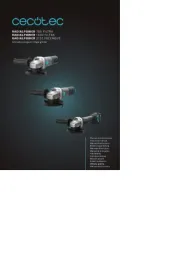
5 Augustus 2025
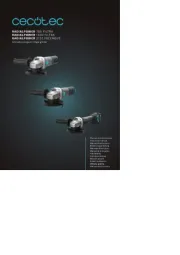
5 Augustus 2025
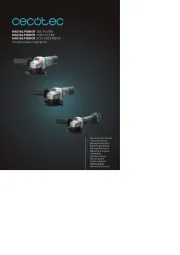
4 Augustus 2025
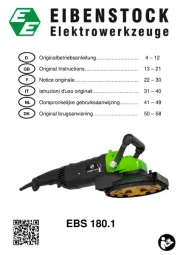
4 Augustus 2025
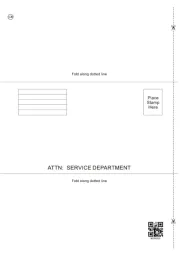
4 Augustus 2025
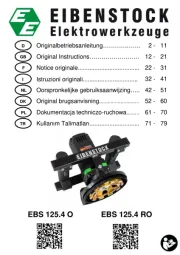
4 Augustus 2025
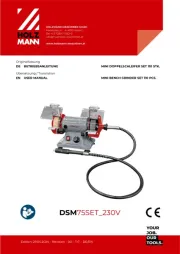
4 Augustus 2025
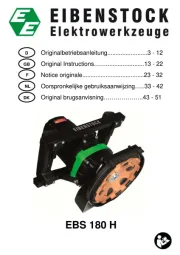
4 Augustus 2025
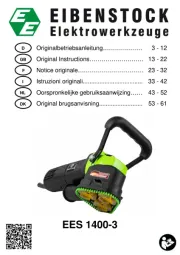
4 Augustus 2025
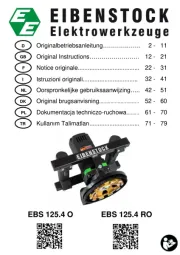
4 Augustus 2025